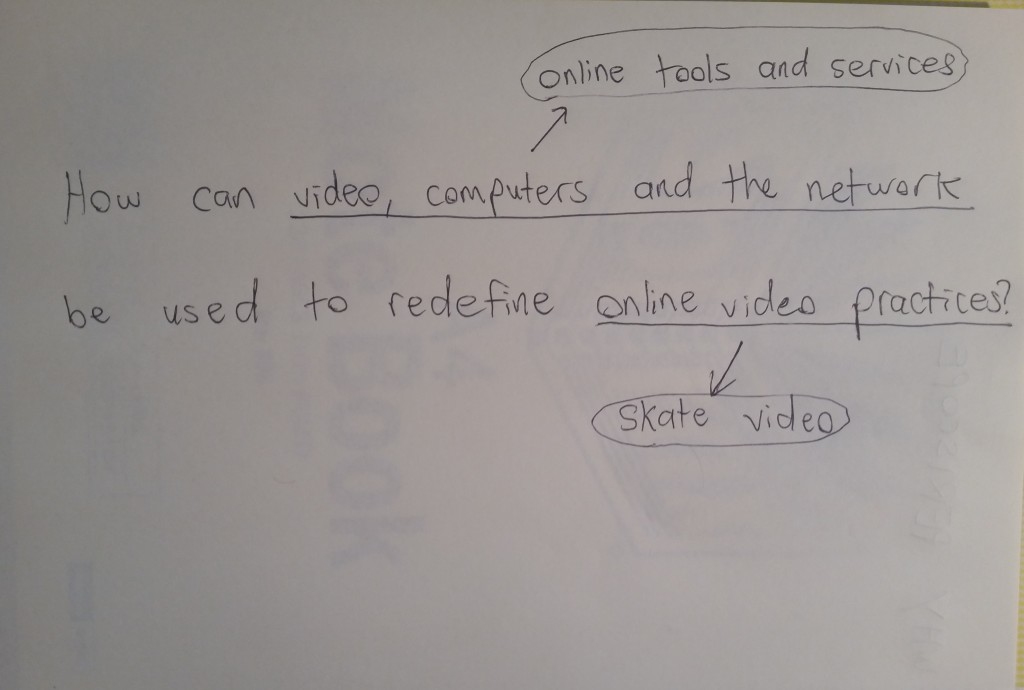How is skate video transformed when it is produced in Meerkat/Tarsii?
Link: https://vimeo.com/125677428
All of the sketches thus far have addressed online services that entail a degree of digital editing and manipulation, or at the least selectivity on distributed content. This interested me in the exploration of online video services that stream live media. Evident throughout current media affairs is mention of Meerkat. Meerkat is a live video broadcasting iOS application that is linked to the functionality of Twitter in order to instantly stream live video to Twitter followers.
Due to the unavailability of an apple iPhone with a compatible operating system for Meerkat, I was restricted to using the Android equivalent (copy) of the application called Tarsii for this sketch. Tarsii is quite a direct copy of Meerkat, meaning the affordances and constraints are transferable in almost all cases. The only significant difference noted was the fact that Tarsii saves a copy of each stream to Twitter profiles (similar to the original Periscope) whereas Meerkat does not. The specific affordances and constraints of Tarsii itself will be addressed in this sketch but the applications resemblance to Meerkat positions this sketch with relevancy to current media affairs and therefore a contemporary example of online video practice.
To create this sketch, I captured Errol performing the skate video succession of tricks through the Tarsii application on my mobile phone. This instantly produced a live stream of the content to my Twitter account, which was then later screen captured to show the audiences perspective of the results. The constraint evident in Tarsii (as well as Meerkat) being a singular stream button which starts the camera, whilst simultaneously beginning the stream meant that the camera and skater actions had to be timed perfectly in attempt to tightly structure the narrative. That being said, a large constraint evident in the use of Tarsii (and Meerkat) is the delay between selecting the stream button and the content actually beginning to stream on the internet. Therefore, the issue that I faced was that the first part of the skate video was missing due to the stream delay. This effects the narrative linearity of the skate video as it begins the narrative from a separate starting point that restructures the narrative form as a vital piece is missing which instigates the starting point of the sequence. Instead of re-filming this sketch and allowing more time for the stream to be connected, I chose to keep this sketch because it highlighted the difference between the constraints of Tarsii in contrast to Stre.am (see Stre.am next) in regards to how the applications transform skate video.
